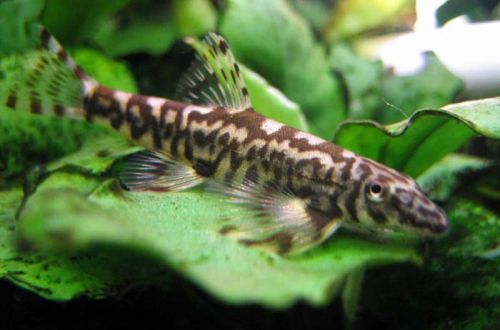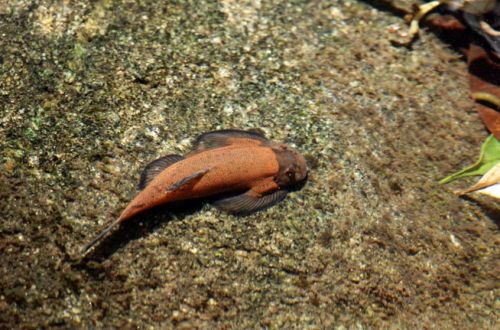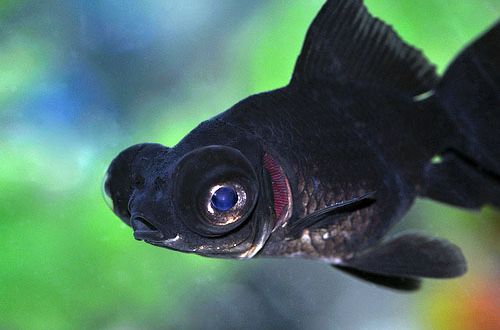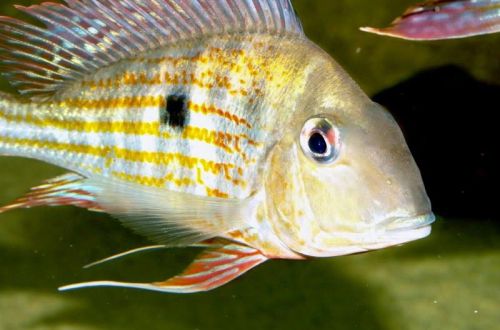
Spotted Geophagus
Spotted Geophagus, scientific name Geophagus abalios, belongs to the Cichlidae family. Rarely found on sale under its real name, more often erroneously supplied as the Surinam Geophagus. Easy to keep, compatible with many other fish species. Perhaps the only problem will be the acquisition and maintenance of a fairly large aquarium.

Contents
Habitat
It comes from South America from the territory of Venezuela from the Orinoco river basin. Inhabits floodplain lakes and sections of slow-flowing rivers, backwaters. It occurs in regions with sandy substrates interspersed with stones, driftwood and various plant debris. The habitat is variable due to alternating wet and dry seasons.
Brief information:
- The volume of the aquarium – from 600 liters.
- Temperature – 26-32°C
- Value pH — 4.0–7.0
- Water hardness – 1–10 dGH
- Substrate type – sandy
- Lighting – subdued
- Brackish water – no
- Water movement is weak
- The size of the fish is up to 20 cm.
- Food – any sinking food
- Temperament – peaceful
- Content in a group of at least 5–8 individuals
Description
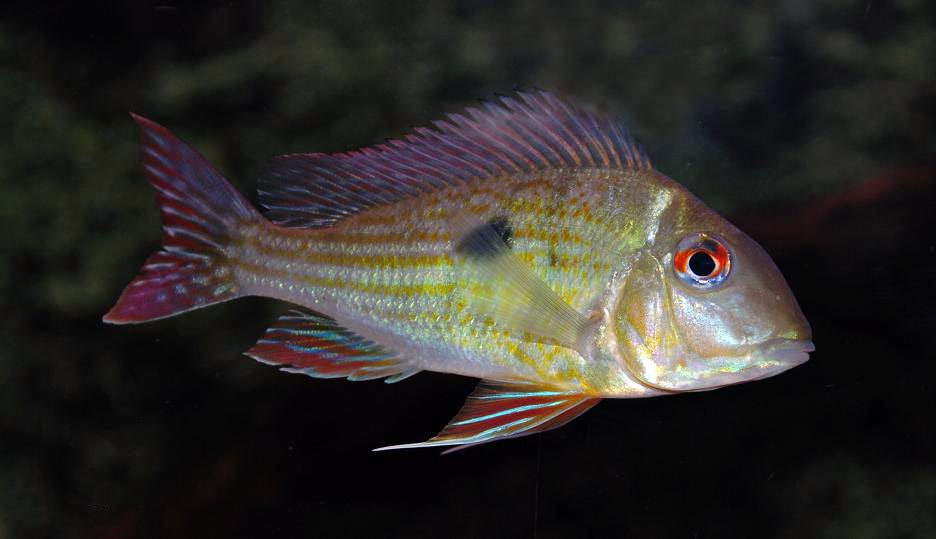
Adults reach a length of 20 cm or more. Sexual dimorphism is weakly expressed. Males and females are practically indistinguishable externally. Depending on the region of origin, the color varies from yellow to pale green. A series of horizontal golden stripes run along the body, with a large dark spot in the center. The fins and tail are reddish with turquoise markings.
Food
They feed in the bottom layer by sifting portions of the soil with their mouths in search of small invertebrates. Thus, in the process of nutrition, the presence of a sandy substrate is important. Feed with sinking dry food (flakes, granules) in combination with brine shrimp, daphnia, bloodworm pieces.
Maintenance and care, arrangement of the aquarium
The optimal size of the aquarium for a group of 5-8 fish starts from 600 liters. The design is optional at the discretion of the aquarist. The only important element of the decor is sandy soil. Accordingly, it is worth avoiding small pebbles that can get stuck in the oral cavity into the substrate.
Although the Spotted Geophagus is not picky about the environment in which it is kept, it will nevertheless look most harmoniously among decorations reminiscent of its natural habitat.
Experienced aquarists additionally use the leaves of some trees in the aquarium, which are a characteristic feature of the natural environment. They serve not so much as an ornament, but as a means of giving water a special chemical composition due to the release of tannins in the process of decomposition. For amateurs and beginners, the use of leaves is not recommended. The fish will create a sort of slurry of partially decomposed material while feeding, which not only looks unsightly, but can also clog the filter system.
Successful long-term keeping depends on maintaining stable water conditions. Fish are sensitive to the accumulation of organic waste. Also, sharp temperature changes and pH and dGH values should not be allowed, dangerous concentrations of nitrogen cycle products should not be reached. To this end, the aquarium is equipped with productive filters and regular maintenance is carried out. The latter include weekly replacement of part of the water with fresh water, timely disposal of waste (feed leftovers, excrement), equipment maintenance, etc.
Behavior and Compatibility
Calm peace-loving fish, except for spawning periods. During the breeding season, Geophaguses become intolerant of tankmates in an attempt to protect their offspring. The rest of the time it gets along well with other non-aggressive freshwater species.
Intraspecific relationships are built on an internal hierarchy dominated by alpha males. It is recommended to maintain the size of the group at least 5–8 individuals; with a smaller number, weak individuals may be attacked by stronger and larger relatives.
Breeding / breeding
Under favorable conditions (balanced diet and high water quality), spawning is not uncommon. With the onset of the mating season, the alpha male forms a temporary pair with the female and occupy a site at the bottom of the aquarium. After a short courtship, spawning occurs. On any flat surface, for example, a stone, the female lays up to 200 eggs, and then takes them into her mouth, where they and the fry that appear will be for several weeks. Periodically, the fry will swim out of their “shelter” to feed. Each time, the duration of free swimming will increase until the fry become completely independent. In some cases, the male joins the care of the offspring, sharing with the female the bearing of the offspring in the mouth. However, often immediately after the appearance of juveniles, he is taken for new courtship of the next chosen one.
Fish diseases
The main cause of diseases lies in the conditions of detention, if they go beyond the permissible range, then immunity suppression inevitably occurs and the fish becomes susceptible to various infections that are inevitably present in the environment. If the first suspicions arise that the fish is sick, the first step is to check the water parameters and the presence of dangerous concentrations of nitrogen cycle products. Restoration of normal/suitable conditions often promotes healing. However, in some cases, medical treatment is indispensable. Read more about symptoms and treatments in the Aquarium Fish Diseases section.



